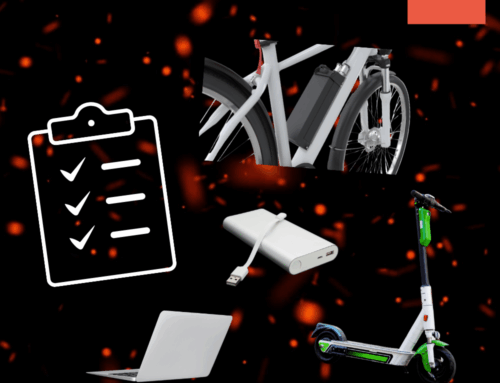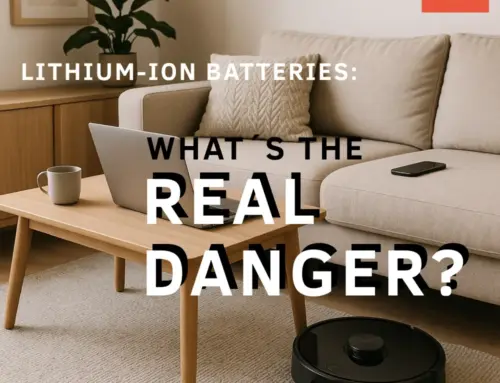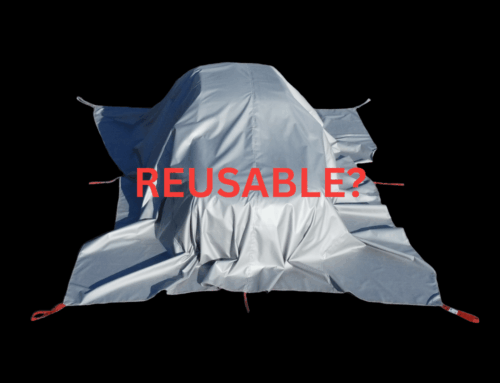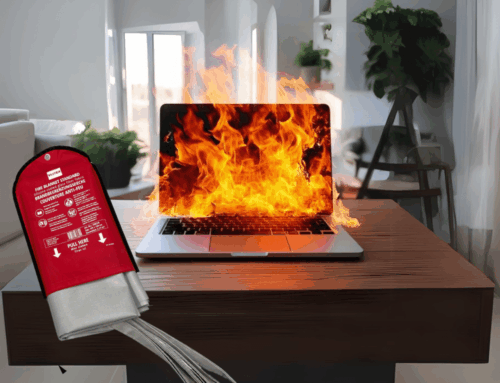
Lithium-ion batteries can be found in almost every household today. Smartphones, laptops, cordless screwdrivers, e-bikes and household appliances - they are all powered by high-performance rechargeable batteries. But although they are efficient and long-lasting, they also pose risks. Incorrect handling, improper storage or faulty batteries can lead to fires or explosions.
How can you safely use, store and charge rechargeable batteries in the home? In this article, you will learn practical safety tips for the daily handling of rechargeable batteries to avoid dangers and extend the service life of the batteries.
Table of contents
Why is battery safety so important?
A battery stores a large amount of energy in a small space. If it is damaged or incorrectly charged, a short circuit or overheating can occur. In some cases, this leads to a thermal runaway - an uncontrolled chemical chain reaction inside the battery that can result in a fire or explosion.
The most common causes of battery fires are
- Mechanical damage due to falls or impacts
- Overcharging or deep discharge due to incorrect charging behavior
- Production or material defects
- Heat or direct sunlight that make the battery unstable
- Incorrect storage or contact with moisture
- Incorrect operation or improper use, for example the use of incompatible chargers or "modifications", such as opening or tampering with batteries
However, these risks can be minimized with simple security measures in everyday life.
1. charging batteries correctly - what you should bear in mind
Errors when charging batteries are one of the most common causes of fires. To ensure that your battery is charged safely, you should observe the following points:
- Only use original chargers: Inexpensive or non-certified chargers can lead to overcharging or overheating.
- Do not charge batteries unattended: A battery should never be charged overnight or without supervision. If a problem occurs, you can react quickly.
- Do not charge in direct sunlight: High temperatures can destabilize the cells and lead to ignition.
- Use a fire containment bag for charging or a fire blanket for additional safety: Fire blankets for batteries offer additional protection if a battery ignites during the charging process.
2. store batteries safely - avoid these mistakes
Batteries should always be stored in a cool, dry place. Ideal storage temperatures are between 10 and 20 °C.
How to store batteries correctly:
- Never store batteries near flammable materials (e.g. paper or textiles).
- Avoid direct sunlight and high temperatures.
- Do not store batteries on damp surfaces.
- If the batteries are not used for a longer period of time, store them at 30-60% charge to avoid deep discharge.
- Store defective batteries separately and protected and dispose of them safely.
3. recognize defective or old batteries and dispose of them correctly
A damaged battery represents an enormous danger and should no longer be used. Look out for the following warning signs:
- Bloated or deformed battery
- Excessive heat generation during charging or discharging
- Cracks in the battery housing
- Automatic switch-off of the device or reduced battery life
How to dispose of batteries safely:
- Never dispose of rechargeable batteries in household waste! They contain toxic substances and can cause fires.
- Use collection points for used batteries in electrical stores or recycling centers.
- Store defective batteries in a fireproof box or a special Fire blanket for batteries until they can be disposed of.
Further information on safe battery disposal can be found on the page of the Stiftung Elektro-Altgeräte Register (EAR).
4. first aid for battery fires - how to react correctly
If a battery starts to smoke or catches fire, you need to act quickly. Normal extinguishing methods such as water are not suitable here!
What to do in the event of a battery fire?
- Disconnect the appliance from the power supply immediately (if safely possible).
- Take the battery outside if it is not yet burning.
- Call the fire department if the fire spreads or cannot be controlled.
- Do not extinguish with water - instead use a fire blanket instead.
fire blankets help to insulate the flames, reduce the heat and protect the surroundings from damage.
CAUTION: A battery fire releases toxic gases!
5. safety in everyday life - how to avoid battery fires
- Never charge batteries unattended
- Disconnect devices and batteries from the charger when they are charged
- Use original chargers and batteries
- Do not expose batteries to direct sunlight or high humidity
- Do not use defective batteries and dispose of them safely
- Havefire blankets ready for emergencies or store and charge batteries already in Fire Bags
These measures can significantly reduce the risk of battery fires in the home.
Conclusion: Use batteries safely and avoid dangers
Rechargeable batteries are practical, but also dangerous if they are used or stored incorrectly. With a few simple measures, every household can increase safety when handling lithium-ion batteries.
The most important safety rules summarized:
- Charge correctly: Only with the original charger, not unattended and not on flammable materials.
- Store safely: Cool, dry and out of direct sunlight.
- Recognizing and disposing of defective batteries: Check for damage and use safe disposal.
- Usefire blankets and Fire Bags : Additional protection to contain battery fires.
With these simple safety measures for everyday life, you can ensure that batteries are used safely - and reduce the risk of a battery fire...
Learn more
Find out more about the safe handling of batteries and fire protection measures:









